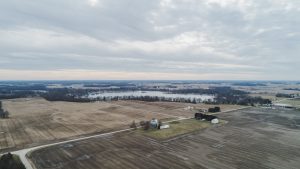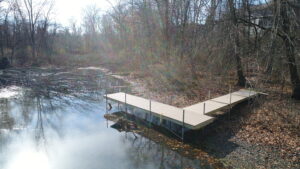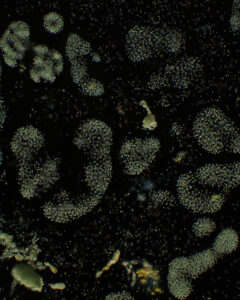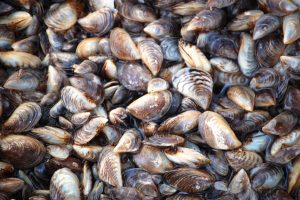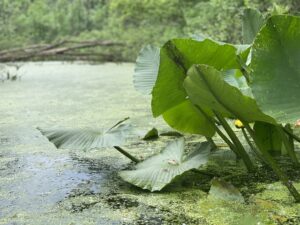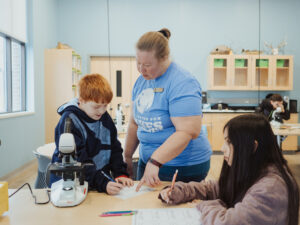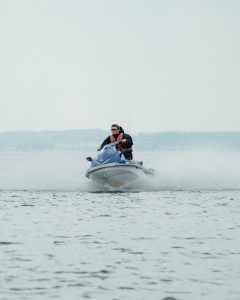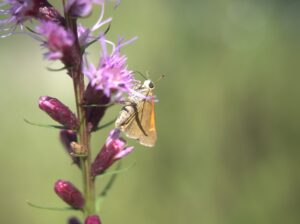Lake Rx: A Prescription for Healthy Lakes
This page was update on October 23, 2025 to reflect updates to Lake RX.
Backed by 15 years of thorough research and numerous research studies, the Lilly Center for Lakes & Streams is thrilled to announce Lake RX, a prescription for healthy lakes. Through Lake RX, the Lilly Center offers a compelling vision to make Kosciusko County’s lakes clean, healthy, safe, and beautiful through projects on land, in the water, and in the community.
Imagine a future where your family enjoys the lake without worrying about blue-green algae toxins. Toxic algae blooms are a thing of the past, and the water is clear and healthy.

Such a future is possible, but first we must understand the problem. The Lilly Center’s research shows that an overabundance of nutrients feeds harmful algae, encourages weed growth, and can even contribute to unsafe E. coli levels. These threats are serious, as shown by Grand Lake St. Mary’s in Ohio. If left unattended, these problems will have a negative impact on the economy, recreation, and human health.
Through partnerships with lake associations, watershed groups, government agencies, and other universities, the Lilly Center will activate wholistic and scientifically-sound solution that will move the needle in lake health.
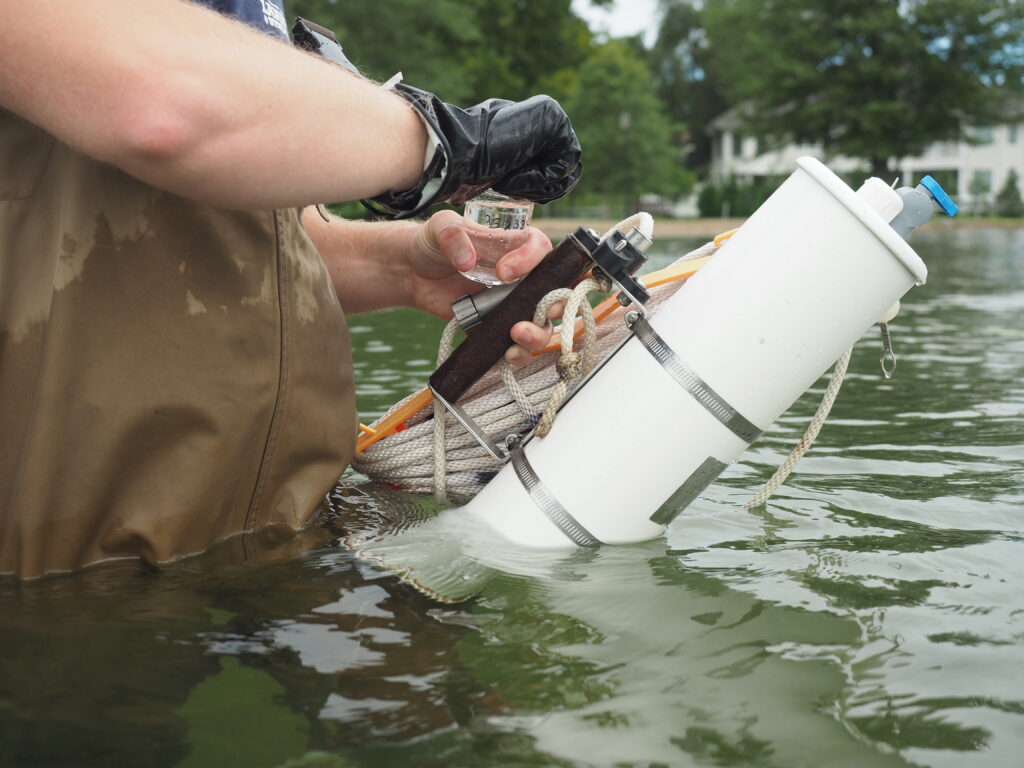
Use the buttons below to explore the unique solutions that could be part of a Lake RX prescription for your lake.
Solutions on Land
Agricultural producers are key partners to the health of the lake thanks to their outsized influence on a lake’s watershed in Kosciusko County. Over 80% of the land surrounding local lakes is agricultural. By identifying the agricultural practices with the best “bang for buck,” the Lilly Center will encourage implementation of proven best management practices (BMPs) that are beneficial to the producer and to the lakes. The Lilly Center’s director, Dr. Nate Bosch, serves on the science assessment committee as part of the Indiana Department of Agriculture. Lilly Center director Dr. Nate Bosch, alongside researchers from IU, Notre Dame, and Purdue, is working to quantify the impact of BMPs and create a recommended approach.
Indiana was once home to thousands of acres of wetlands. Today, only 15% of the original wetlands remain. Kosciusko and Noble County have over 6% of the existing wetland acres. Wetlands are important ecosystems that are often found next to lakes and streams and act as “kidneys,” filtering pollutants out of the water before that water reaches a local waterbody. The Lilly Center is assembling a group of wetland engineers, consultants, and scientists to assist in assessing current wetlands and identifying wetlands with the most potential for filtration and lake impact. Studies conducted in Ohio at Grand Lake St. Mary’s show a significant reduction in blue-green algae toxins as a result of constructed wetlands near stream inflows around the lake.
Solutions in the Water
Over the last 15 years, the Lilly Center has conducted research on blue-green algae on 12 all-sport lakes (since 2012) and added more lakes in 2015 and 2023 for a total of 16 lakes. At each lake, the Lilly Center’s research team conducts toxin analysis and collects algae data that is analyzed in the Lilly Center’s lab. Lake RX will spur this effort for greater impact by increasing the analytical capabilities to find trends and connections between algae populations and the toxins produced. Through this research, the Lilly Center will look to predict and eventually prevent harmful algae blooms, making recreation safe for people and their pets.
Invasive species such as zebra mussels pose a threat to a lake’s ecology by outcompeting native mussel species. But they also pose a human health threat thanks to their diet. Zebra mussels choose to feed on non harmful species of green algae and filter out harmful blue-green algae species, unnaturally skewing a lake’s ecosystem to contain far more blue-green algae than other species. Up to 85% of the algae species in Kosciusko County’s lakes are made up of blue-green algae. The Lilly Center will partner with the Indiana Department of Natural Resources (IDNR) to explore options that would reduce the populations of zebra mussels and restore a balanced lake ecosystem.
Aquatic plants, scientifically known as aquatic macrophytes, are a natural component of a lake’s ecosystem. Aquatic plants serve the lake by providing habitat for aquatic creatures, holding soil in place, and consuming nutrients in the water (and making them unavailable for consumption by algae). Too many aquatic plants can impede boat recreation and swimming, making the lake inaccessible for the community. Mechanical harvesting, common in Michigan, Wisconsin, and Minnesota, is an alternative to chemical-based solutions. Harvesting aquatic plants from a lake completely removes nutrients that otherwise would be available to algae during a plant’s lifecycle. Harvested plant material can be composted or offered to farmers as a free form of fertilizer.
Solutions in the Community
Educating the next generation of water-literate citizens starts today. The Lilly Center makes over 10,000 K-12 student connections annually thanks to a suite of programs that include in-house and destination programming. In addition to the quantity, the Lilly Center’s programs also excel in their quality. In 2025, the Lilly Center’s education programs received the Governor’s Award for Excellence in Environmental Outreach and Education for the second time. Not only do the programs and lessons meet state standards to support teachers, but they are also innovative and hands-on. K-12 students learn about their local lakes through Lake in the Library, Classroom Lake Experience, Lake Adventure Day, and indoor and outdoor field trips. Community education events geared toward adults help folks change behavior today.
Finally, the Lilly Center employs over 45 college interns from Grace College each school year. Almost 200 students have built their resumes at the Lilly Center; about 80% of these college interns pursue environmental professions in Northern Indiana after graduation.
A research study by the Lilly Center found that boating in at least 10 feet of water when creating a wake minimizes the impact on the lake bottom, leaving nutrients undisturbed and unavailable for aquatic plants and algae to use as food. Ongoing research suggests that boating at least 500 feet from shore reduces negative impacts on shorelines. Concerted marketing and education efforts to increase awareness around responsible boating and partnerships with marinas, manufacturers, and lake associations can change behavior in measurable ways and change lake culture.
Caring for one’s own property is a tangible way anyone can have an impact on the quality of a lake, regardless of whether that property is on the shore of a lake or within the watershed. Community events, awareness campaigns, and cost-sharing can encourage property owners to install native plant buffers to help retain soil and nutrients rather than allowing them to enter the lake. Additional best practices include composting, proper disposal of yard waste, and using phosphorus-free fertilizer. Campaigns to change behavior now can invigorate support for water quality as the community understands the value a lake provides.
By following the steps in Lake RX, our lakes will be safe for everyone (including Fido!) to enjoy. We can end the need for algae toxin notifications, keep our public beaches free from E. coli, and enjoy peace of mind on the lake.
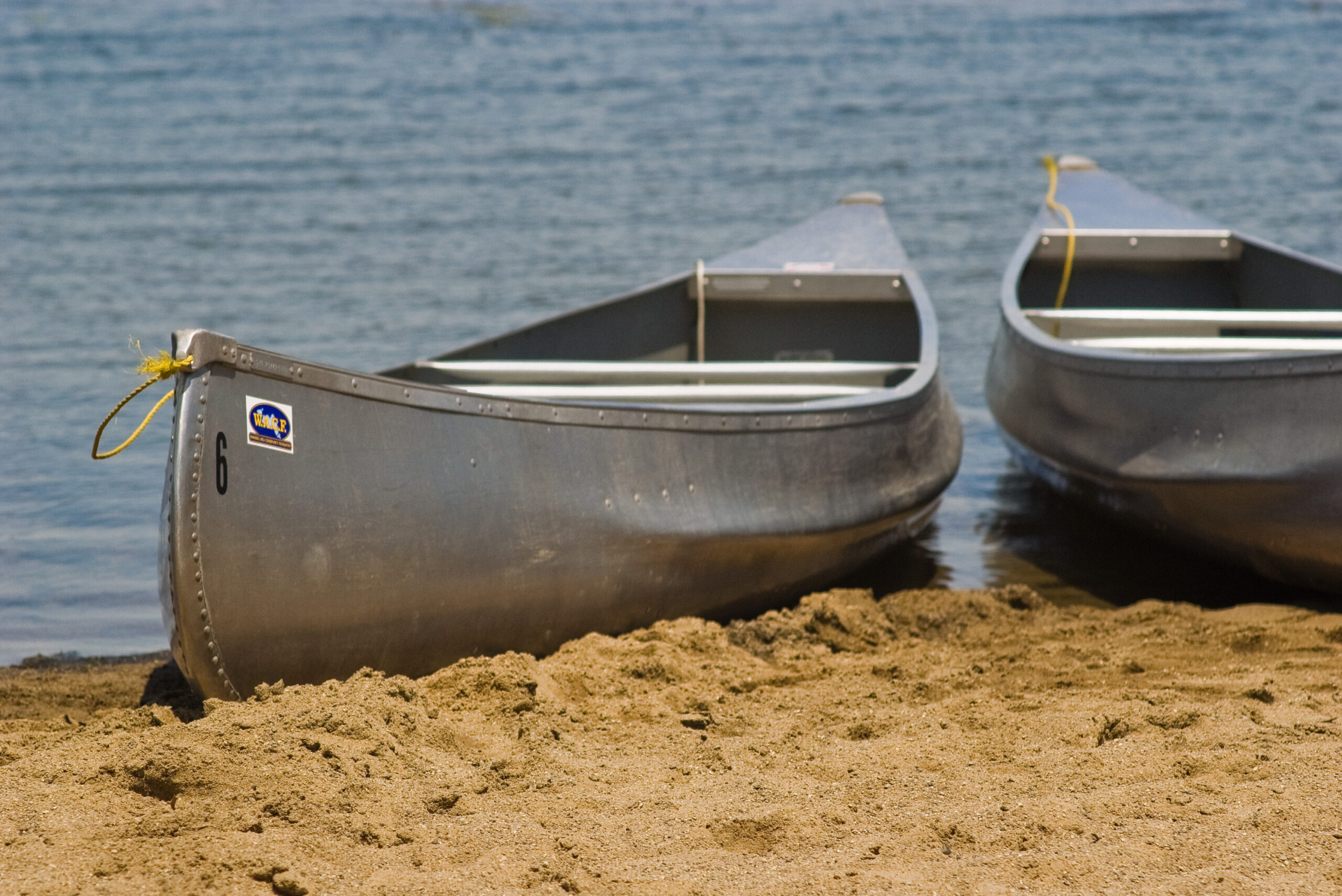
Receive updates about Lake Rx
Lake RX is an evolving plan based on the best science and recommendations that are available. You can contact the Lilly Center to learn more about how Lake RX can make an impact on your local lake by emailing lakes@grace.edu.
